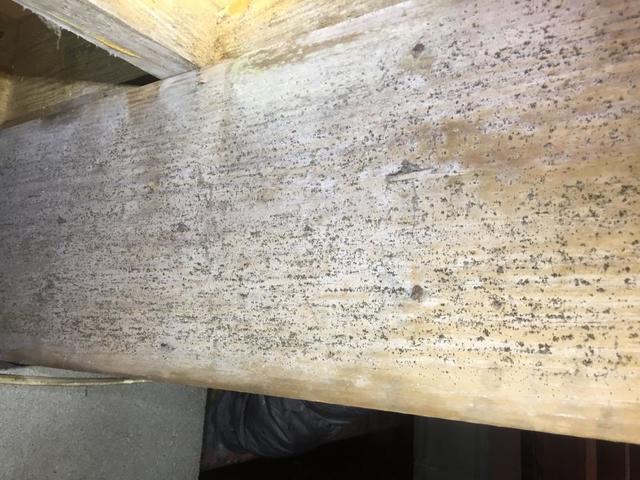Not All Crawl Space Encapsulations are Created Equally Part I - Mold Remediation
Not all crawl space encapsulations are created equally. When encapsulating their crawl space, homeowners face a lot of decisions. What is the best way to remediate mold? Do I have a water infiltration issue, and do I need a drainage solution? What type of liner or vapor barrier should I use? What insulation is best for my crawl space? How do I best seal the rim & band and sill plate? Do I need a dehumidifier? There are a lot of things to think about when you decide to encapsulate your crawl space. The best way to approach this is to understand your options and the advantages and disadvantages of each.
Mold
Many crawl spaces, especially the ones in high humidity areas such as Hampton Roads and Greater Richmond, have mold in them. The first thing we need to understand about mold is that it requires three things to grow and thrive.

2) Warm temperatures – approximately 60-80 degrees or warmer
3) High Relative Humidity – approximately 60% or higher
The next thing you need to know is that 50% of the air you breathe inside your home comes from the crawl space. These are important factors to consider when determining how to address mold in your crawl space.
There are three options for dealing with mold:
- Do Nothing – you can leave the mold which will continue to grow and affect the integrity of your floor joists, supporting wooden girders and subfloor. If and when conditions are no longer conducive to mold growth, it will eventually go dormant. However, this presents a risk. Eventually, the dried, dormant mold will flake off and become airborne. (this is where it is important to remember that 50% of the air you breathe in your home comes from the crawl space.) This airborne dormant mold affects the air quality in your home and can agitate individuals. Here it is important to note that everyone reacts differently to this and some may have no reaction at all, but this airborne mold especially affects individuals with allergies, asthma, and breathing conditions.
- Use an Antimicrobial To “Kill” The Mold – an antimicrobial will kill the mold it is applied to but does not completely remove it. In this instance, the mold is dead and will eventually flake off and become airborne. This does keep the mold from continuing to cause damage to your floor joists, but airborne mold still poses a risk when it enters the livable space.
- Completely Remove the Mold – this can be achieved by using an antimicrobial and physical wipe down. This means the remediation company will wipe down all treated joists, by hand, to remove the mold after the antimicrobial is applied. However, some companies offer a stronger antimicrobial (The product The Drying Co. uses is called Mold-X2) This product doesn’t require a physical wipe down, instead of when the antimicrobial is applied it kills and removes the mold and must be followed by a botanical solution to neutralize the chemical.
It is up to the homeowner to determine what course of action they want to take when remediating the mold in their crawl space. However, it is important to understand that just “killing” the mold does not keep it from being harmful. In fact, the EPA says it isn’t enough to kill mold, though it won't grow or harm wood, it will still affect air quality just as much as live mold, if not more, as it becomes airborne.



